Among the mystical tools utilized by Wiccans are Wiccan runes, these witch symbols and tools hold a special place, offering practitioners a way to tap into the ancient wisdom and mystical energies of runic alphabets. In this article, we will explore the fascinating world of Wiccan runes, their history, significance, and how they are used in modern Wiccan practices with Wiccan Rede.
What are Wiccan Runes and Their Different Types
Wiccan runes, also known as the Witch’s Runes, are a set of symbols used in Wiccan and other modern pagan practices for divination, spellwork, meditation, and various ritual purposes. Unlike traditional runic alphabets, such as the Elder Futhark, Wiccan runes are not used for writing but are instead a collection of symbols each representing specific concepts, elements, or aspects of the natural world. Here are some of the most commonly used Wiccan runes:
Witch’s Runes: The Witch’s Runes, also known as the Wiccan Runes, are a set of 24 symbols that have been adapted from traditional runic alphabets. They are not used for writing but rather as symbols representing various concepts, elements, and natural phenomena. Each Witch’s Rune has its own specific meaning and associations, making them a versatile tool for divination, spellwork, and meditation.
Theban Runes: The Theban alphabet, also known as the Witch’s Alphabet, is a script often used in Wiccan symbols and other occult practices. It consists of 24 characters, each corresponding to a letter of the English alphabet. Wiccans use Theban runes for writing spells, inscribing charms, and creating magical talismans. The script is thought to have originated in the 16th century and was attributed to John Dee, a renowned occultist.
Ogham Runes: Ogham is an ancient Celtic script used primarily in Ireland and parts of the British Isles. Wiccans interested in Celtic spirituality may incorporate Ogham runes into their practice. Each Ogham symbol is associated with a specific tree and has its own divinatory meaning. These runes are used for both divination and spellwork, especially when working with Celtic deities or nature-based magic.
Futhark Runes: While not exclusive to Wicca, some Wiccan practitioners may choose to work with traditional runic alphabets like the Elder Futhark or the Younger Futhark. These alphabets have historical and cultural significance, and their runes can be used for divination, spellwork, and meditation. However, they are less common in Wiccan spells than the Witch’s Runes.
Ceremonial Runes: In some Wiccan traditions, especially those influenced by ceremonial magic, practitioners may use a set of ceremonial runes. These runes may be based on various occult systems and are often used in rituals and ceremonial magic practices.
Personalized Runes: Some Wiccans choose to create their own set of personalized runes, often known as “witch’s staves” or “Wiccan staves.” These personalized symbols can be designed to represent specific aspects of the practitioner’s spirituality, experiences, or intentions.
It’s important to note that the choice of which type of runes to use in Wiccan practice is a matter of personal preference and tradition. Each type of rune carries its own unique symbolism and energy, and Wiccans may select the set that resonates most strongly with their spiritual path and magical goals. Additionally, some Wiccans may choose to work with multiple sets of runes, depending on the nature of their rituals and spellwork.
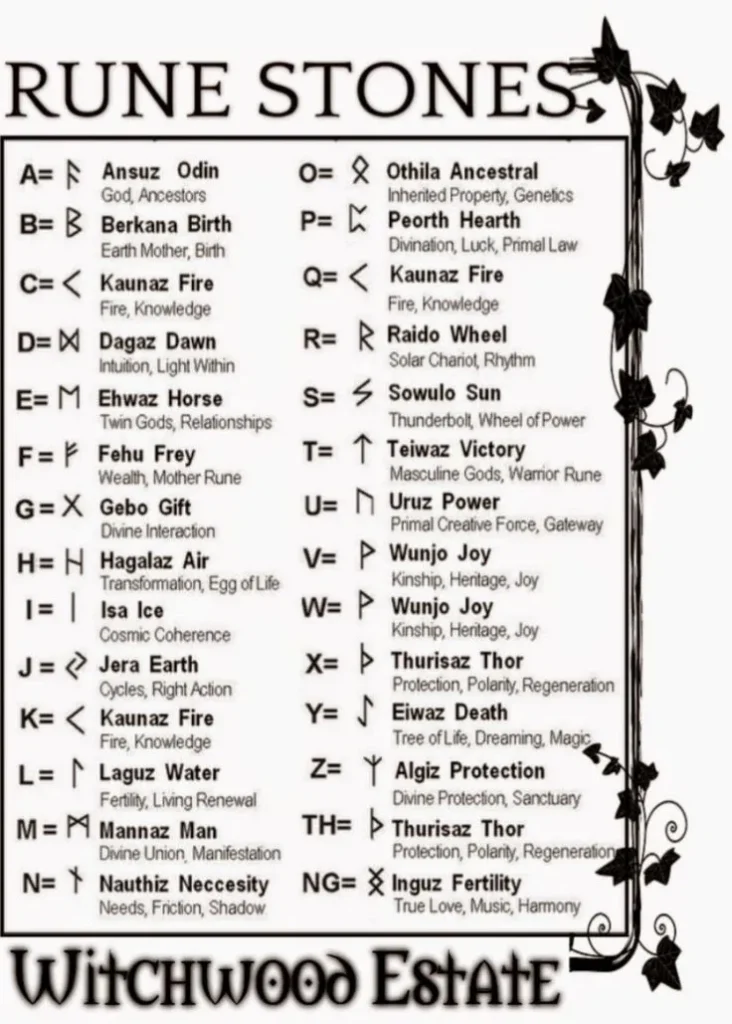

Read More: Wiccan vs Pagan: Exploring the Big Distinctions
The Origin of Wiccan Runes
The origin of Wiccan runes can be traced back to the broader history of runic symbols and their incorporation into modern Wiccan practices. Wicca, as a religion and belief system, emerged in the mid-20th century, primarily influenced by the works of Gerald Gardner and Doreen Valiente. These early Wiccans drew inspiration from a variety of sources, including folk magic, ceremonial magic, astrology, and ancient pagan traditions.
Incorporating runes into Wicca was a natural extension of this eclectic approach to spirituality. The traditional runic alphabets, such as the Elder Futhark or Younger Futhark, had long been associated with magical and divinatory practices in various cultures, particularly in Northern Europe. As such, they held a certain mystical appeal for those seeking to reconnect with ancient wisdom and tap into the energies of the natural world.
However, it’s essential to clarify that Wiccan runes are not a direct continuation of the historical runic alphabets used by the Germanic peoples. Instead, Wiccans adapted and reinterpreted these symbols to align with their own beliefs and practices. Here’s how the origin of Wiccan runes unfolded:
- Symbolic Adaptation: Wiccans selected specific runic symbols and adapted them to fit within the framework of Wiccan spirituality. Rather than using runes primarily as a written language, they redefined them as symbols representing elemental forces, deities, and natural phenomena.
- Incorporation into Rituals: Wiccan runes found their way into various Wiccan rituals, such as circle casting, spellwork, and divination. Each rune was given a specific meaning and purpose within the Wiccan context, aligning with the principles of nature worship and reverence for the elements.
- Modern Usage: Wiccan runes, also known as the Witch’s Runes, became a staple tool in the modern Wiccan toolkit. They are used alongside other magical tools like athames, chalices, and pentacles. Practitioners engrave or draw these symbols on materials like stones, wood, or parchment for use in rituals and spellcasting.
- Divination: Wiccans adopted runic divination practices, casting or drawing runes to gain insights into spiritual matters, personal growth, and decision-making. The interpretation of the runes in this context is influenced by both traditional runic meanings and Wiccan symbolism.
- Integration with Wiccan Beliefs: Wiccans see runes as a means of connecting with the natural world, the elements, and the divine, consistent with their belief in a harmonious relationship with nature and the cycles of the moon.
In summary, the origin of Wiccan runes can be traced back to the mid-20th century when early Wiccans incorporated traditional runic symbols into their eclectic practices. These symbols were adapted and imbued with new meanings to align with the core beliefs of Wicca, making them an integral part of modern Wiccan rituals, spellwork, and divination. While they may not have the same historical roots as the ancient runic alphabets, Wiccan runes have become a potent and meaningful tool for contemporary Wiccans seeking to deepen their spiritual connection with nature and the unseen forces of the universe.
the Modern Interpretation
The modern interpretation of Wiccan runes involves a reimagining and repurposing of traditional runic symbols to align with the beliefs and practices of modern Wicca. While traditional runes were primarily used as an ancient writing system, modern Wiccan runes have been adapted to serve a different set of purposes within the context of Wiccan spirituality. Here’s a closer look at the modern interpretation of Wiccan runes:
- Symbolic and Elemental Associations: Wiccan runes are viewed as symbols representing various aspects of nature, spirituality, and magical intent. They are often associated with the elements (earth, air, fire, water, and spirit) and other natural forces. Each rune typically has a specific elemental or symbolic connection that aligns with the Wiccan belief in the interconnectedness of all things in the natural world.
- Divinatory Tool: Wiccan runes are frequently used as a divinatory tool, similar to tarot cards or other forms of divination. Practitioners cast or draw runes and interpret their meaning to gain insights into spiritual matters, personal growth, or to seek guidance on specific questions or issues. Interpretations can be based on a combination of traditional runic meanings and Wiccan symbolism.
- Magical Correspondences: Wiccan runes are integrated into spellwork and ritual practices. Each rune is chosen for its specific symbolic and elemental attributes, and they are often inscribed on candles, amulets, or other magical tools to enhance the power and intent of spells. For example, a rune associated with protection might be used in a spell to create a protective barrier.
- Meditation and Focus: Wiccan practitioners use runes as a focal point during meditation to connect with their energy and symbolism. Meditating on a specific rune can help attune the practitioner to its unique qualities and can be used for personal empowerment, insight, and spiritual development.
- Altar Decorations: Wiccan altars are often adorned with rune symbols to invoke specific energies or blessings during rituals and ceremonies. These symbols serve as a visual representation of the intentions and energies being worked with during the ritual.
- Personal Growth and Transformation: Wiccan runes are also seen as tools for personal growth and transformation. Practitioners may work with specific runes to align with their intentions for self-improvement, healing, or achieving specific goals.
It’s important to note that there is no universally accepted set of Wiccan runes, and different Wiccan books or practitioners may have their own variations and interpretations. The exact meanings and associations of each rune can vary, so it’s advisable for Wiccans to study and work with the specific system of Wiccan runes that aligns with their personal beliefs and practices.
In conclusion, the modern interpretation of Wiccan runes involves transforming traditional runic symbols into a system of magical and divinatory tools that resonate with Wiccan spirituality. These runes are used for divination, spellwork, meditation, and as symbols of elemental and spiritual forces, making them an integral part of modern Wiccan practice.
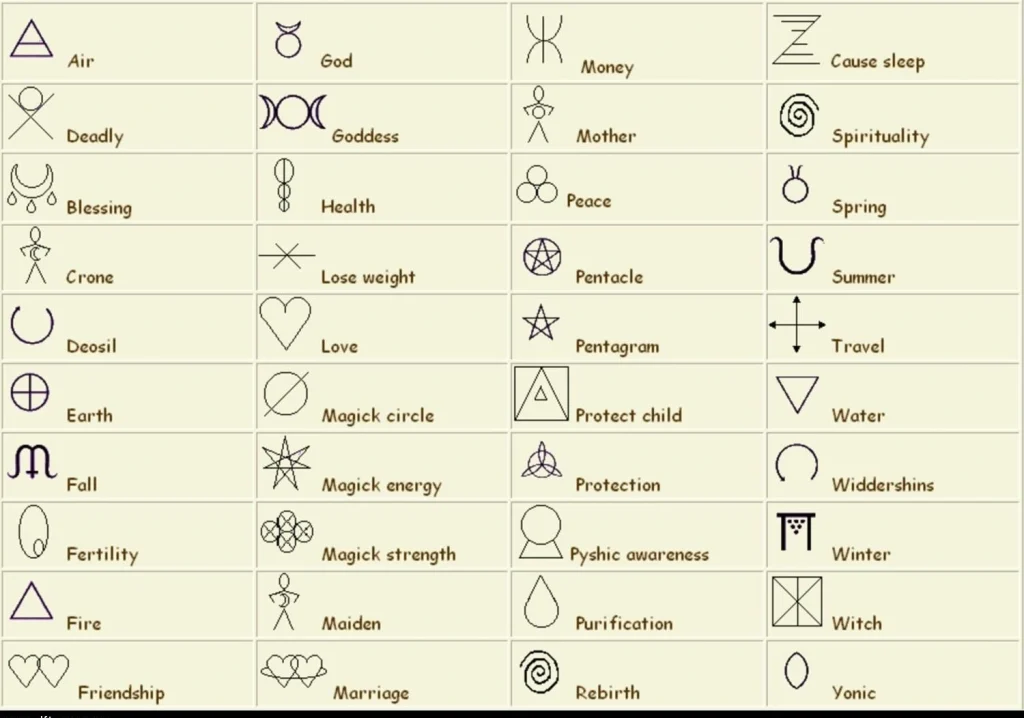

The Significance of Wiccan Runes
The significance of Wiccan runes lies in their role as powerful symbols and tools within the framework of Wiccan spirituality and magical practice. These symbols are not just decorative or arbitrary; they carry deep meaning and are used with specific intentions. Here, we delve into the significance of Wiccan runes:
- Connection to Nature: Wiccan runes are seen as a way to connect with the natural world and its elemental forces. Each rune is associated with an element (earth, air, fire, water, and spirit) or other aspects of the natural world, such as animals, plants, and celestial bodies. This connection to nature is central to Wiccan beliefs, where reverence for the Earth and its cycles is fundamental.
- Elemental Powers: Each rune represents an elemental or symbolic attribute, making them powerful tools for working with the elements in magical practices. For example, a rune associated with fire can be used to invoke the fiery energy of passion, transformation, and willpower in spells and rituals.
- Divination and Insight: Wiccan runes serve as a means of divination, allowing practitioners to tap into their intuitive and psychic abilities. Drawing or casting runes and interpreting their meanings can provide insight into spiritual matters, personal growth, and decision-making. It’s a way to seek guidance from the unseen forces of the universe.
- Spellwork and Magical Intent: Wiccans use runes in spellwork and ritual to enhance their magical intent. By inscribing or incorporating specific runes into their spells, they can harness the symbolic and elemental energies associated with each rune to achieve their goals. This makes runes a valuable tool for manifesting desires, protection, healing, and more.
- Meditation and Focus: Wiccan practitioners often use runes as focal points during meditation. By meditating on a particular rune, they aim to attune themselves to its energies and symbolism. This can facilitate personal empowerment, insight, and spiritual development.
- Personal Connection: Runes can hold personal significance for Wiccans, who may choose specific runes that resonate with their spiritual journey, intentions, or experiences. This personal connection deepens the meaning and power of the runes in their practice.
- Altar Decorations and Rituals: In Wiccan rituals and ceremonies, runes are often incorporated as altar decorations. They serve as visual representations of the intentions and energies being worked with during the ritual. This helps create a sacred and focused atmosphere.
- Transformation and Growth: Wiccan runes can be used as tools for personal growth and transformation. Practitioners may work with specific runes to align with their intentions for self-improvement, healing, or achieving specific goals. Runes are seen as catalysts for change and evolution.
In summary, the significance of Wiccan runes within the Wiccan tradition lies in their multifaceted roles as symbols of nature, tools for divination and spellwork, aids in meditation, and vehicles for personal growth and transformation. They offer Wiccans a way to connect with the elements, tap into their intuitive abilities, and work with the energies of the natural world and the unseen forces of the universe in their spiritual and magical practices.
Using Wiccan Runes
Using Wiccan runes is a versatile and meaningful practice within Wicca, offering practitioners a variety of ways to work with these symbols in their spiritual and magical endeavors. Whether for divination, spellwork, meditation, or as altar decorations, here’s a more detailed look at how Wiccan runes are used:
- Divination:
- Casting Runes: One common method of divination with Wiccan runes involves casting them onto a cloth or surface and interpreting the patterns and positions in which they fall. This process is similar to casting lots and can provide insights into questions, situations, or future events.
- Drawing Runes: Alternatively, runes can be drawn one at a time from a bag or container and arranged in a pattern. The practitioner then interprets the meaning of each rune and their combined message to answer a specific query or gain general insights.
- Runic Spreads: Wiccan practitioners may develop or adopt specific rune spreads, similar to tarot card spreads, that provide a structured way to read and interpret the runes in divination. Each position in the spread represents a different aspect of the question or situation.
- Intuitive Interpretation: Interpretation of the runes often involves intuition and personal insight. While there are traditional meanings associated with each rune, many Wiccans rely on their own feelings, experiences, and associations when interpreting the runes’ messages.
- Spellwork and Rituals:
- Rune Inscriptions: Wiccan runes are often inscribed or drawn on candles, stones, parchment, or other magical tools to enhance the power and intent of spells and rituals. The choice of runes depends on the desired outcome and the symbolism associated with each rune.
- Energy Focus: Runes can serve as focal points during rituals, helping practitioners concentrate their energy and intent. This focus is especially useful when invoking specific elemental forces or deity energies associated with particular runes.
- Creating Bind Runes: Bind runes are combinations of multiple runes merged into a single symbol. These are crafted for specific purposes or intentions and can be used in spellwork to blend the energies of the individual runes for a particular outcome.
- Meditation:
- Rune Meditation: Practitioners meditate on a specific rune to connect with its energy and symbolism. This can lead to personal insights, spiritual growth, and a deeper understanding of the rune’s attributes.
- Visual Focus: Meditating on a rune symbol helps Wiccans channel their thoughts and intentions, making it easier to access the energies associated with that rune. This can be a valuable practice for personal empowerment and inner exploration.
- Altar Decorations:
- Symbolic Presence: Wiccan altars are often adorned with rune symbols to invoke specific energies or blessings during rituals and ceremonies. These symbols serve as visual representations of the intentions and energies being worked with during the ritual.
- Personal Growth and Transformation:
- Working with Personal Runes: Some Wiccans create their own set of personalized runes, often referred to as “witch’s staves” or “Wiccan staves.” These symbols may represent personal aspects of the practitioner’s spiritual journey, intentions, or experiences, and they can be used for meditation and personal growth.
In using Wiccan runes, it’s essential for practitioners to approach them with respect, mindfulness, and a deep understanding of their symbolism and significance. Whether seeking insights, enhancing spells, or deepening one’s spiritual practice, Wiccan runes provide a meaningful and powerful way to connect with the natural world and the unseen energies of the universe.
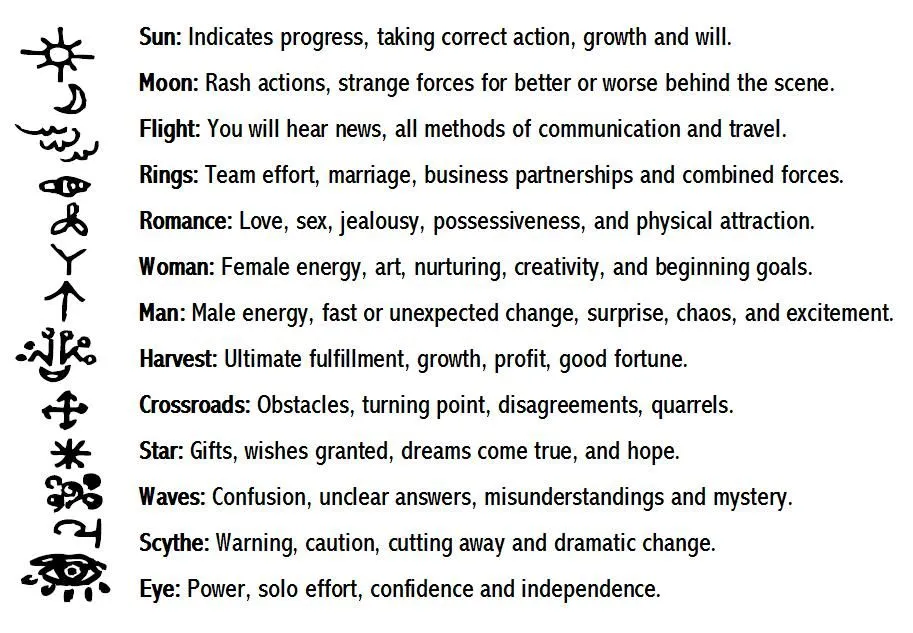

How to Create Your Own Wiccan Runes
Creating your own Wiccan rune, often referred to as a personalized or custom rune, is a meaningful and creative process that can deepen your connection to your spiritual path and intentions. Here’s a step-by-step guide on how to create your own Wiccan rune:
- Set Your Intentions:
- Begin by clarifying your intentions for creating a personalized rune. What aspect of your life or spirituality do you wish to symbolize or work with through this rune? Consider your goals, desires, and areas of personal growth.
- Research and Inspiration:
- Research existing runes, symbols, and their meanings. This will help you draw inspiration and ensure that your custom rune is aligned with Wiccan symbolism and principles.
- Explore the traditional runes and their meanings, as well as other symbols commonly used in Wiccan practices, such as pentacles, the moon, the sun, or the elements.
- Sketching and Design:
- Find a quiet and meditative space where you can focus your creative energy.
- Begin sketching your rune design on paper. Let your intuition guide you as you draw. You can start with simple shapes and lines and gradually refine your design until it feels right.
- Incorporate elements or symbols that resonate with your intentions. For example, if you’re focusing on healing, you might include a symbol for healing or a representation of the element of water.
- Be open to modifying your design as you go along. Your initial idea may evolve as you work on it.
- Consider Color and Materials:
- Decide if you want to add color to your rune. The choice of color can carry additional symbolism. For instance, green might represent growth and abundance, while blue could symbolize spirituality and intuition.
- Think about the material you want to use for your rune. You can create it on paper, wood, stone, clay, or any material that resonates with you. The material can also influence the final appearance of your rune.
- Energize and Charge:
- Once your rune is complete, it’s essential to infuse it with your energy and intent. You can do this through meditation and visualization.
- Find a quiet space, hold your rune in your hands, and focus on its symbolism and purpose. Visualize your intentions and desires being absorbed into the rune.
- You can also speak words of power or intention over the rune to charge it. For example, you might say, “I charge this rune with the energy of healing and growth.”
- Incorporate It into Your Practice:
- Your personalized rune can now be used in various ways in your Wiccan practice. You can use it for meditation, as a focal point in rituals, as an amulet for protection, or in spellwork that aligns with its symbolism.
- Record Your Journey:
- Keep a journal or record of your experiences and observations as you work with your personalized rune. Note any insights, changes, or manifestations related to your intentions and the use of the rune.
- Share and Celebrate:
- If you’re comfortable, you can share your personalized rune with your coven or Wiccan community. This can be a meaningful way to celebrate your spiritual journey and connect with others who share your path.
Creating your own Wiccan rune is a personal and magical process. Trust your intuition, embrace your creativity, and let your intentions guide you as you craft a symbol that holds deep meaning and power in your Wiccan practice.
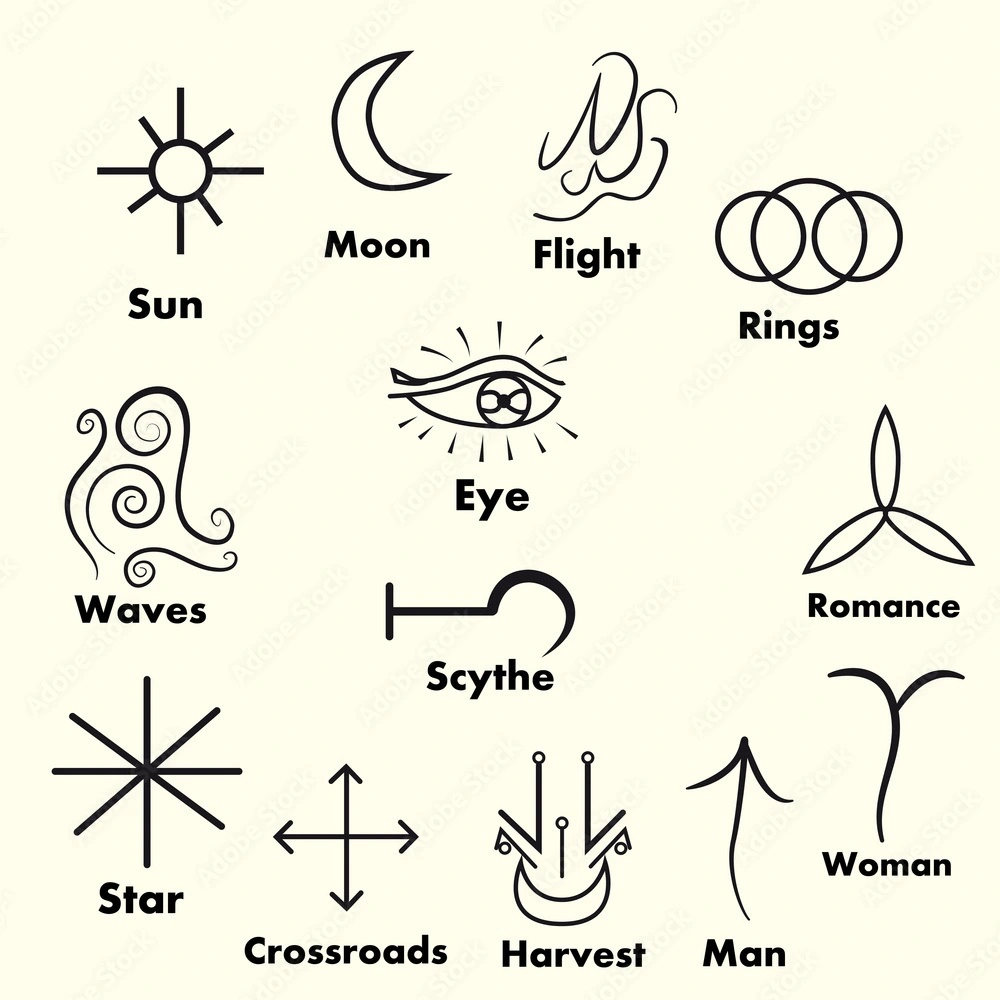

Conclusion
Wiccan runes are a captivating aspect of Wiccan spirituality, allowing practitioners to connect with the ancient mysteries of the natural world and harness their energies for personal growth and magical endeavors. Whether used for divination, spellwork, meditation, or simply as decorative elements on an altar, these symbols hold a place of reverence and power in the world of modern Wicca. As with any magical practice, it is important for Wiccans to approach runes with respect, mindfulness, and a deep understanding of their symbolism and significance.

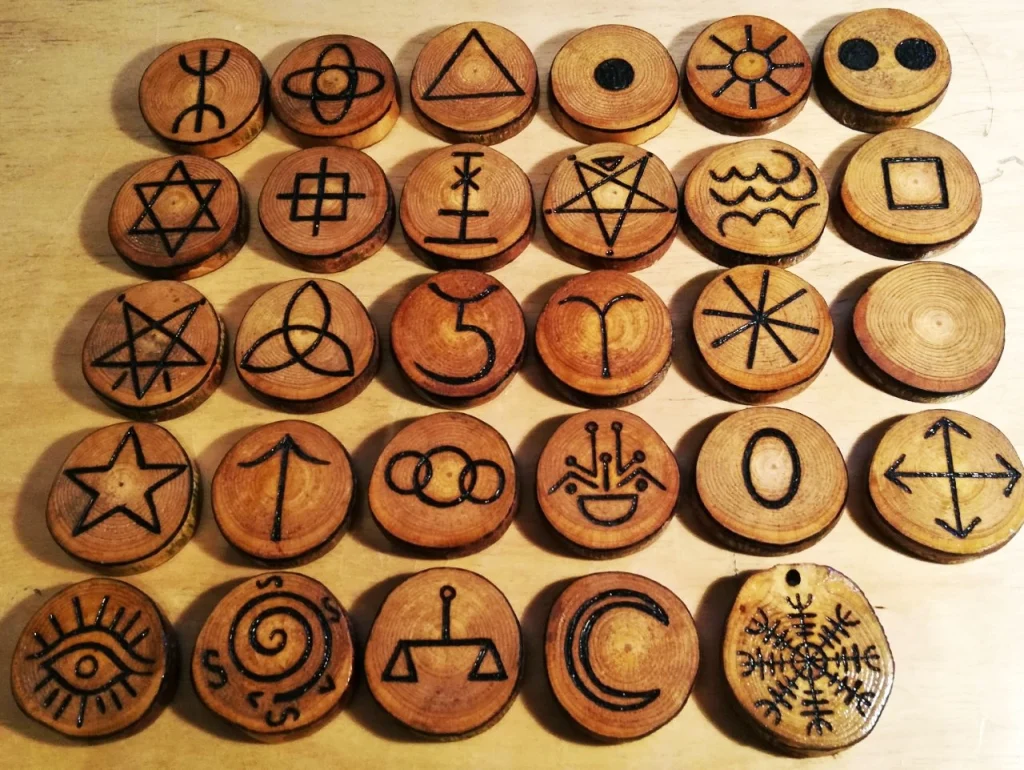
Pingback: Unveiling the Mystical World of Wiccan Runes: S...